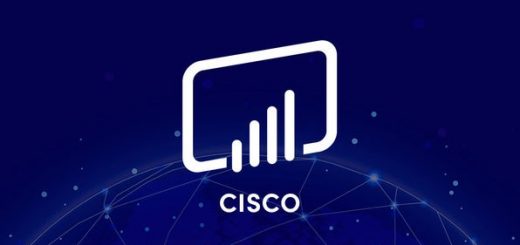Michael Wang became a poster child for protesting affirmative action. Now he says he never meant for it to be abolished
Back in 2013, as a senior in high school, Michael Wang sent a series of emails to admissions offices at the colleges that had rejected him. He asked how race played into their decisions, specifically for Asian American students like him. With near-perfect test scores, stellar grades and a pages-long resumé of extracurricular activities, he wanted to know why he had been rejected from the nation’s most prestigious universities. Finding their boilerplate responses insufficient, he filed discrimination complaints against three universities with the federal Department of Education’s Office for Civil Rights.
Unknowingly, Wang helped set in motion the latest movement to end affirmative action on college campuses. Now, he said, “a part of me regrets what I’ve put forward.”
In the 10 years since he sent the emails and filed the complaints, he’s come to feel that the issue is much bigger than just whether he got to attend Harvard College. He’s concluded, he said, that “affirmative action is a Band-Aid to the cancer of systemic racism.”
Even after more than five decades of affirmative action in college admissions, dramatic inequities by race in college enrollment and degree attainment persist. Between Black and White Americans, the college enrollment gap has been growing wider since 2010, according to data from the National Center for Education Statistics and the National Student Clearinghouse.
With the potential end of race-conscious admissions looming, Wang isn’t sure if a world without affirmative action is better or worse than the world we live in now.
“Where we are now is not great, but I’m scared to see what’s going to happen in the future,” Wang, now 27, said in an interview with The Hechinger Report.
The Supreme Court is expected to rule on two affirmative action cases next month. One alleges discrimination against Asian American applicants at Harvard, and another alleges discrimination against white and Asian American applicants at the University of North Carolina at Chapel Hill.
Wang, who graduated from Williams College in 2017, is not named in either lawsuit. And although he became a poster child for opposition to affirmative action, Wang’s concern was always more nuanced. Yes, he filed those complaints; yes, he met with Edward Blum, the driving force behind opposition to race-based admissions, and agreed to speak publicly about his own situation, over and over and over again.
Every time Wang spoke out, however, he talked about remedying unfairness to Asian American students – not eliminating all racial considerations in admissions. He believes colleges have unfairly used affirmative action to hold Asian Americans to higher standards than other applicants, and that policies that help some historically marginalized students but disadvantage others aren’t fair.
“I’m not anti-affirmative action,” he said. “I just want it reformed.”
Yet Wang’s willingness to share his disillusionment at his own college-admissions experience has helped push the already existing movement to where it is today.

Colleges began enacting affirmative action policies in the 1960s and 1970s, aiming to add racial and gender diversity to college campuses, and opponents began challenging them shortly thereafter. In 1978, the Supreme Court ruled that colleges could use race as a factor in admissions, but could not use racial quota systems. Since then, there have been several high-profile lawsuits that have modified the Supreme Court’s position on affirmative action in limited ways.
Related: College admissions is already broken. What will happen if affirmative action is banned?
Proponents of affirmative action say that ending the practice will hurt historically underrepresented people in higher education and will reinforce inequities that left these communities underrepresented in the first place. They also argue that diversity on campuses improves the educational experience of all students.
“The purpose here of these cases before the Supreme Court is to suggest that something like a diverse community isn’t something that’s important and valuable, and that race should not be a part of the kind of conversation we’re having, and that’s the part that is really dangerous,” said Anurima Bhargava, who led federal civil rights enforcement in schools and higher education institutions at the Department of Justice during the Obama administration and now leads the advising and consulting firm Anthem of Us, which promotes equity in schools, workplaces and communities.
She added, “It doesn’t account for the fact that so much of the way in which our education systems are set up is privileging some to the detriment of many others.”
Affirmative action critics believe that if colleges give preference to Black and Latino students, that will raise the bar for Asian and white students, who will then be fighting for a reduced number of seats.
“You can’t preference someone into a class without preferencing someone out,” said Gail L. Heriot, a law professor at the University of San Diego and a member of the United States Commission on Civil Rights, who opposes affirmative action policies.
That’s what Wang felt had happened when he was denied entry to Harvard, despite the resumé he had spent years working tirelessly to build.

The responses to his emails and to the discrimination complaints Wang filed with the Department of Education didn’t prompt the action he’d hoped for. He got in touch with Blum, who was then representing a white student, Abigail Fisher, who had been rejected from the University of Texas in an affirmative action case before the Supreme Court. (The court ultimately ruled against her.)
Blum, who is white, founded the nonprofit Students for Fair Admissions, the group that brought both cases now before the Supreme Court. Because Blum was looking for plaintiffs who were still in the college application process, it was too late for Wang to join either case. But he said he solved a significant problem for Blum: None of the students the lawyer was then representing was willing to speak out or be named, fearing retaliation. And so Wang became the public face of his campaign.
Back in the fall of 2013, Wang had moved to Massachusetts to start classes at Williams, a prestigious liberal arts school where about 10 percent of students were Asian, 7 percent were Black, 12 percent were Hispanic and 42 percent were white.
“How can we contribute to the leadership of tomorrow? That leadership has got to be diverse.”
Natasha Warikoo, sociology professor, Tufts University
When he found himself one of two Asian American students in a political science class, it was difficult to keep the affirmative action questions out of his head, he said, and he began to wonder what the lack of racial diversity meant for the diversity of opinion.
“Diversity is still crucially important to the learning experience, but at what cost do we achieve that diversity?” he wondered.
Being part of this movement for a decade has prompted Wang to think deeply about how college applicants are judged, he said.
“Let’s say you have an African American student whose family is barely above the poverty line, but has tried hard to go to debate tournaments, attend school, working their butt off trying to get to the end of the day,” Wang said. “A 3.7 GPA. Pretty impressive, solid exam scores, but a really inspiring lifestyle. Compared to an Asian American student who comes in with everything off the charts, A’s in everything, 4-point-whatever GPA, super high test scores.
“How do you decide at that point? I don’t know.”
In an interview for a documentary film produced by WCNY and Retro Report, in partnership with The Hechinger Report, Wang said, “I think affirmative action is still very necessary in helping minorities who actually need it.”
And he said the pervasive “model minority” myth, which suggests that all Asian American students are high-performing and successful, works to erase the history of discrimination against Asian Americans.
Wang said he did not understand the magnitude of the situation – and the change that could be coming – until the Supreme Court shifted to a conservative majority over the past few years.
By then, Wang was finishing up his political science degree at Williams, working as a paralegal, and then moving through law school at Santa Clara University in California. He said he was in part inspired to pursue the law because of his experience with college admissions and his belief that the ways race was being considered were unfair. (Though that was his motivation, Wang is now interested in intellectual property law.)
But as he was learning the law, the way the highest court was interpreting the law was changing.
“You can’t preference someone into a class without preferencing someone out.”
Gail L. Heriot, a law professor at the University of San Diego
Wang pointed to two examples: a 2018 Supreme Court ruling in favor of a Colorado baker who refused to make a cake for a same-sex couple’s wedding, and the overturning of Roe v. Wade, which dramatically altered abortion access in the country.
“This Court has done a lot of things that we didn’t think would ever be possible,” Wang said. “The things I learned in my constitutional law class now don’t matter, just because the recent Supreme Court has overturned them.”
Now more than ever, he said, he has no idea what to expect.
“Affirmative action might get completely tossed and I don’t fully agree with that,” Wang said in the documentary. “Maybe there is a problem with implementation, that doesn’t mean we toss affirmative action out the door. There is a middle ground.”
Related: Why elite colleges won’t give up legacy admissions
But it’s unclear what that middle ground could be, and if there is any chance of finding it this late in the game.
Natasha Warikoo, a sociology professor at Tufts University in Massachusetts who has written several books on race in college admissions, said that lessons can be learned from the eight states that have banned affirmative action.
Those states often struggle to recruit the same proportions of students from historically marginalized groups, Warikoo said. Instead, those students end up going to “lower status” colleges with lower graduation rates, and therefore become less likely to graduate and reap the benefits of a bachelor’s degree. She said it results in fewer Black, Latino and Asian American leaders.
“How can we contribute to the leadership of tomorrow? That leadership has got to be diverse,” Warikoo said during a recent panel discussion on affirmative action. “We’ve got to get students who are going to go back to their community, contribute to that community and address issues that they can understand.”
Bhargava believes race and ethnicity are a central part of many people’s identity that should not be erased during the college admissions process. In many cases, she said, they also profoundly affect housing location, school district, family earning potential and connections to power – factors that can hold many students back from college success.
“All I wanted was an answer. Instead of an answer, all I got was 10 years of more questions.”
Michael Wang
“The ways in which a lot of our systems are set up, kids who are Black and brown have a bunch of things stacked against them,” she said.
Bhargava also worries that, whatever the Supreme Court decides on these cases, the blame will extend beyond Michael Wang to Asian American students all over the country.
Wang expects the same thing, which he finds disappointing, but not surprising.
If the court rules against raced-based affirmative action, he said he expects to hear, “Asian Americans probably don’t deserve this. Look at what they’ve done.” And if the court upholds affirmative action, he expects to hear, “There was nothing wrong with this to begin with. What are Asian Americans complaining about? They already get into college.”
“This issue has just become too politicized, and caused so much racial tension, I think it’s just hard not for it to end up that way,” Wang said.
Though he is wary from the decade-long journey he’s been on with this issue, he said he doesn’t regret it. He would encourage his 17-year-old self to send the emails, he said, and to take all of the same steps, if for no other reason than to help future generations of Asian American students.
“All I wanted was an answer,” Wang said of his teenage self. “Instead of an answer, all I got was 10 years of more questions.”
This story about Michael Wang was produced by The Hechinger Report, a nonprofit, independent news organization focused on inequality and innovation in education. Sign up for our higher education newsletter.



